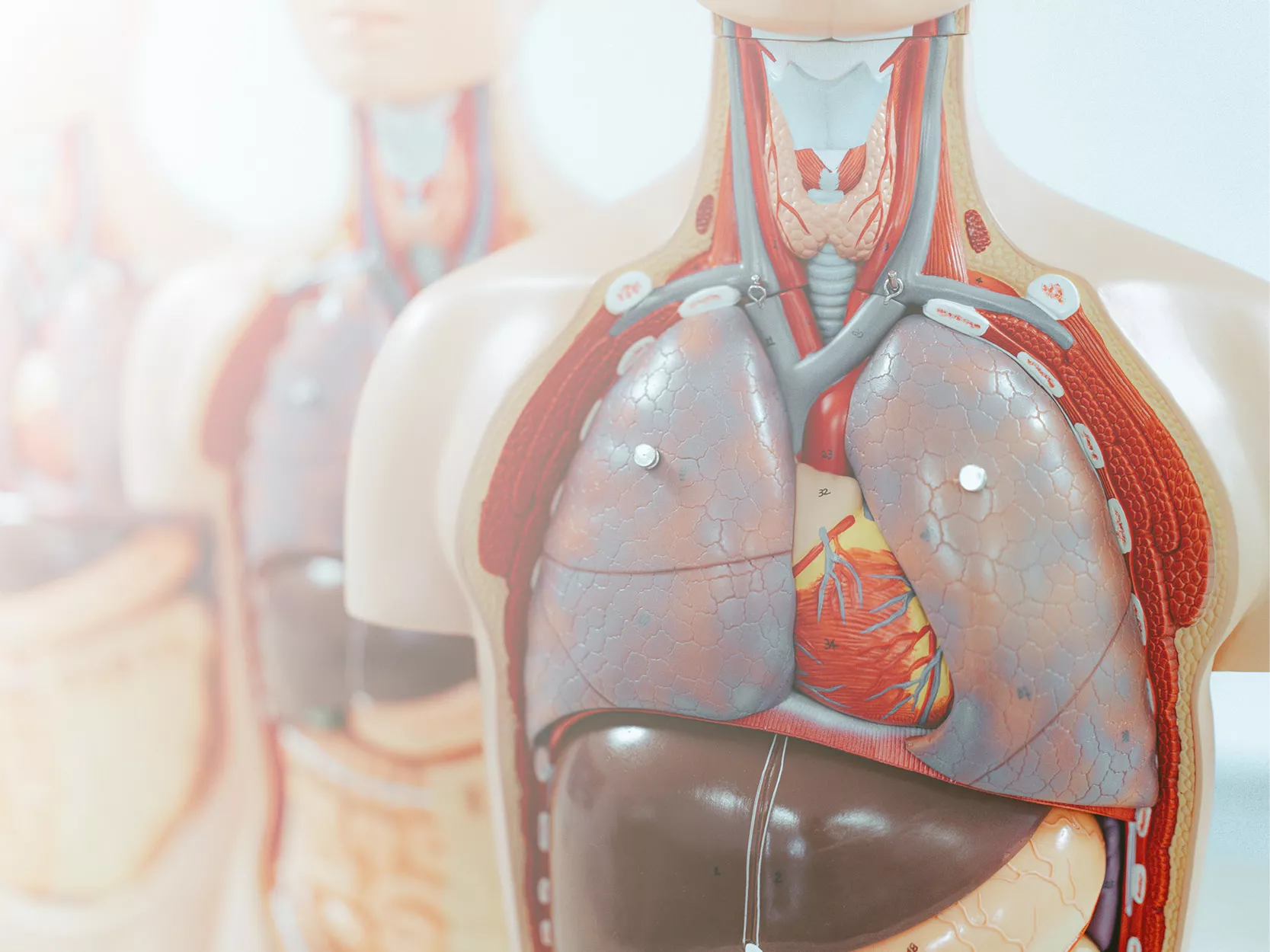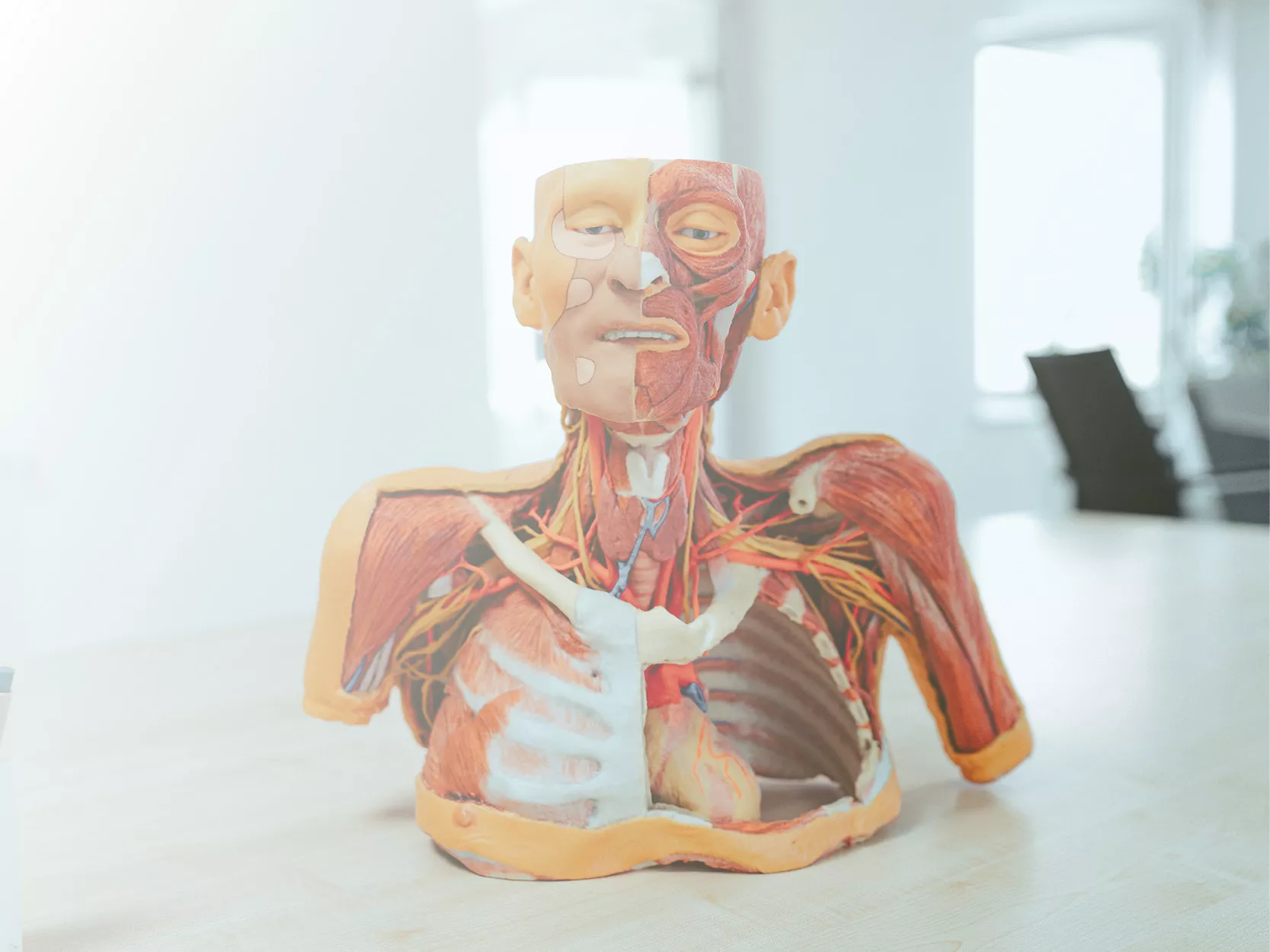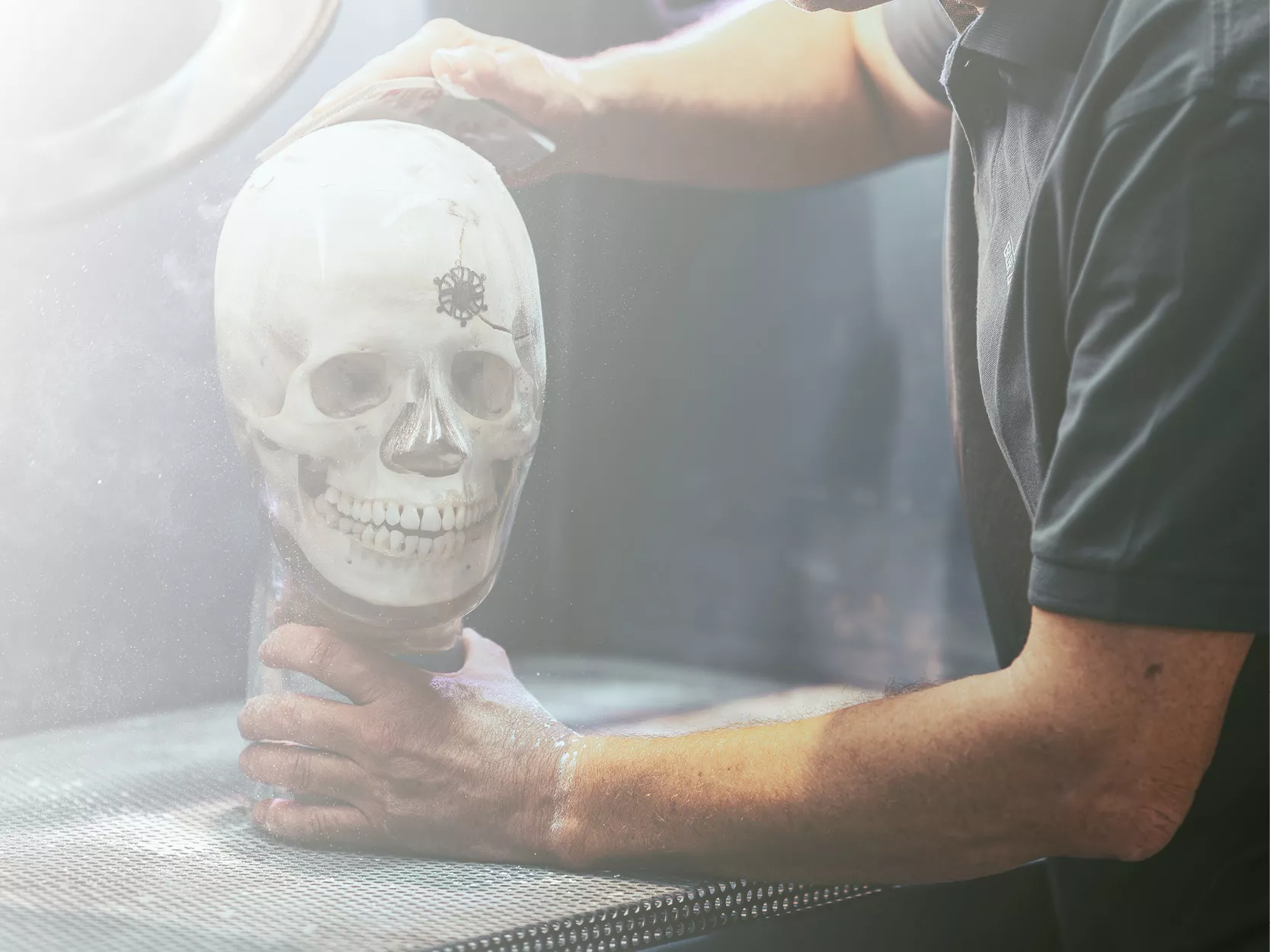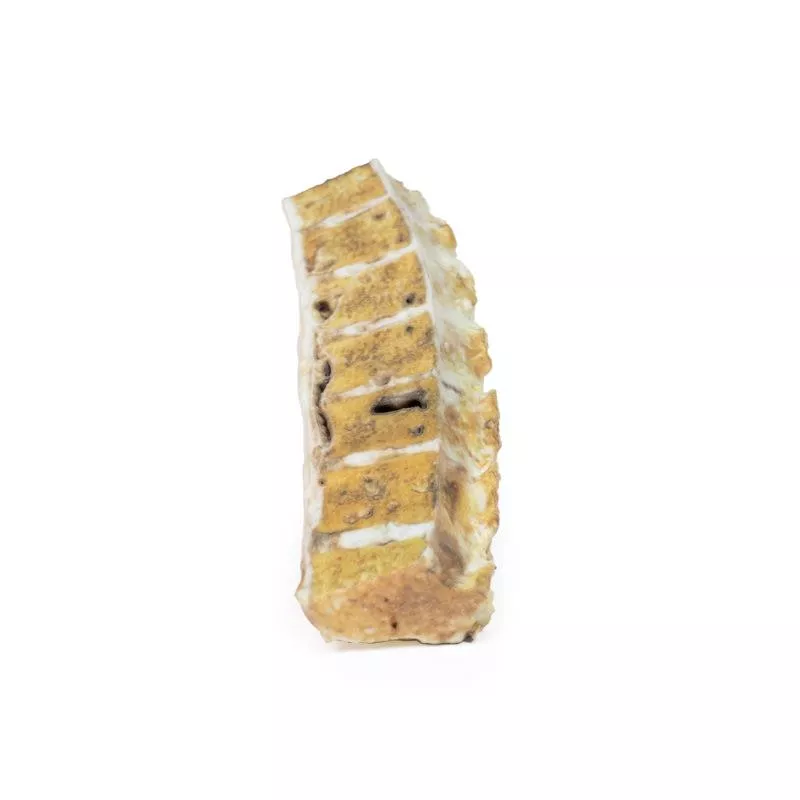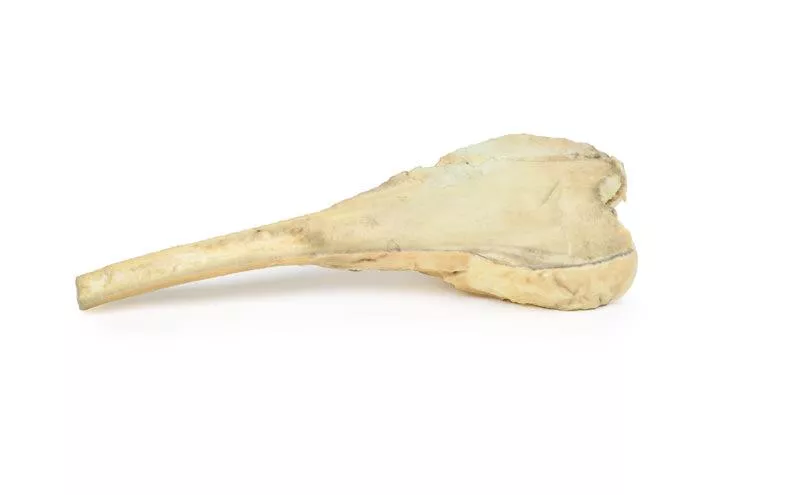Product information "Tuberculosis"
Clinical History
A 37-year-old female with untreated HIV and pulmonary tuberculosis presents with worsening thoracic back pain, low-grade fevers, chills, and weight loss. Examination showed tenderness over multiple thoracic vertebrae. Blood tests revealed elevated serum calcium and ESR. Spine X-ray showed lytic lesions. She developed urosepsis and died during admission.
Pathology
The thoracic vertebrae specimen shows multiple osteolytic lesions with caseous necrosis and bone sclerosis. The tuberculous infection spread to intervertebral discs and paravertebral tissues. This is tuberculous osteomyelitis of the spine (Pott’s disease).
Further Information
Tuberculosis (TB) is a chronic infectious disease caused by Mycobacterium tuberculosis, transmitted by inhalation of droplets. Risk factors include immunosuppression (HIV, steroids), malnutrition, and living in endemic areas. Most infections remain latent but can reactivate, especially in immunocompromised patients. Osseous TB occurs in 1–3% of cases, with Pott’s disease representing 40% of bone TB infections. It causes bone destruction, vertebral collapse, and neurological symptoms from cord compression. Diagnosis involves history, chest X-ray, sputum cultures, and biopsies.
A 37-year-old female with untreated HIV and pulmonary tuberculosis presents with worsening thoracic back pain, low-grade fevers, chills, and weight loss. Examination showed tenderness over multiple thoracic vertebrae. Blood tests revealed elevated serum calcium and ESR. Spine X-ray showed lytic lesions. She developed urosepsis and died during admission.
Pathology
The thoracic vertebrae specimen shows multiple osteolytic lesions with caseous necrosis and bone sclerosis. The tuberculous infection spread to intervertebral discs and paravertebral tissues. This is tuberculous osteomyelitis of the spine (Pott’s disease).
Further Information
Tuberculosis (TB) is a chronic infectious disease caused by Mycobacterium tuberculosis, transmitted by inhalation of droplets. Risk factors include immunosuppression (HIV, steroids), malnutrition, and living in endemic areas. Most infections remain latent but can reactivate, especially in immunocompromised patients. Osseous TB occurs in 1–3% of cases, with Pott’s disease representing 40% of bone TB infections. It causes bone destruction, vertebral collapse, and neurological symptoms from cord compression. Diagnosis involves history, chest X-ray, sputum cultures, and biopsies.
Erler-Zimmer
Erler-Zimmer GmbH & Co.KG
Hauptstrasse 27
77886 Lauf
Germany
info@erler-zimmer.de
Achtung! Medizinisches Ausbildungsmaterial, kein Spielzeug. Nicht geeignet für Personen unter 14 Jahren.
Attention! Medical training material, not a toy. Not suitable for persons under 14 years of age.





